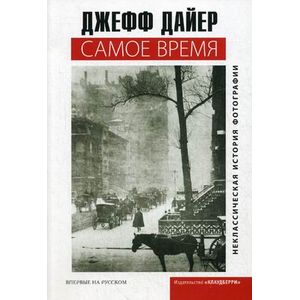It"s time. Non -classical history of photography
Please sign in so that we can notify you about a reply
The book "The Time" ("The Oonging Moment") is an extremely unusual study of photography. It is the study - despite the non -classical performance, it has every right to be called so.
Jeff Dayer offers a non -chronological and non -linear view of the history of photography. This is an attempt to classify and systematize knowingly immense material, despite the fact that the criteria used are obviously biased. Dyer himself admits that his work is most like the "one Chinese encyclopedia" of Borges.
The list of photographers whose work is explored by 42 names, among which Paul Stand, Dorothea Lange, Andre Kerth, Alfred Eyglitz, Edward Weston and Walker Evans occupy a special place. With his deliberately subjective approach, Dyer fraught with all claims in the spirit "But what about A. ” Or “why is there so little about B.?”, But a sane person does not have such questions.
The book contains many poetic quotes, and this is not by chance. Dayer studies photographs and through motives found in them with meticulousness worthy of a literary criticism professor. He finds the finest allusions and, painstakingly unraveling the ball into which they inevitably intertwine, passes from one frame to another, from one plot to another. From "blind musicians" to "night cities", from "hands" to "hats".
Despite all the impressionism, at first glance, fragments seemed to be scattered in fact in fact form a serious and comprehensive narrative. It is the narrative, and it is conducted in the first person. The book is not divided into chapters, and it is almost impossible to retell. It remains only to read
Jeff Dayer offers a non -chronological and non -linear view of the history of photography. This is an attempt to classify and systematize knowingly immense material, despite the fact that the criteria used are obviously biased. Dyer himself admits that his work is most like the "one Chinese encyclopedia" of Borges.
The list of photographers whose work is explored by 42 names, among which Paul Stand, Dorothea Lange, Andre Kerth, Alfred Eyglitz, Edward Weston and Walker Evans occupy a special place. With his deliberately subjective approach, Dyer fraught with all claims in the spirit "But what about A. ” Or “why is there so little about B.?”, But a sane person does not have such questions.
The book contains many poetic quotes, and this is not by chance. Dayer studies photographs and through motives found in them with meticulousness worthy of a literary criticism professor. He finds the finest allusions and, painstakingly unraveling the ball into which they inevitably intertwine, passes from one frame to another, from one plot to another. From "blind musicians" to "night cities", from "hands" to "hats".
Despite all the impressionism, at first glance, fragments seemed to be scattered in fact in fact form a serious and comprehensive narrative. It is the narrative, and it is conducted in the first person. The book is not divided into chapters, and it is almost impossible to retell. It remains only to read
Author:
Author:Dyer Jeff
Cover:
Cover:Soft
Category:
- Category:Arts & Photography
- Category:Reference books
Publication language:
Publication Language:Russian
Paper:
Paper:Gazeta
ISBN:
ISBN:978-5-903974-11-5
No reviews found
